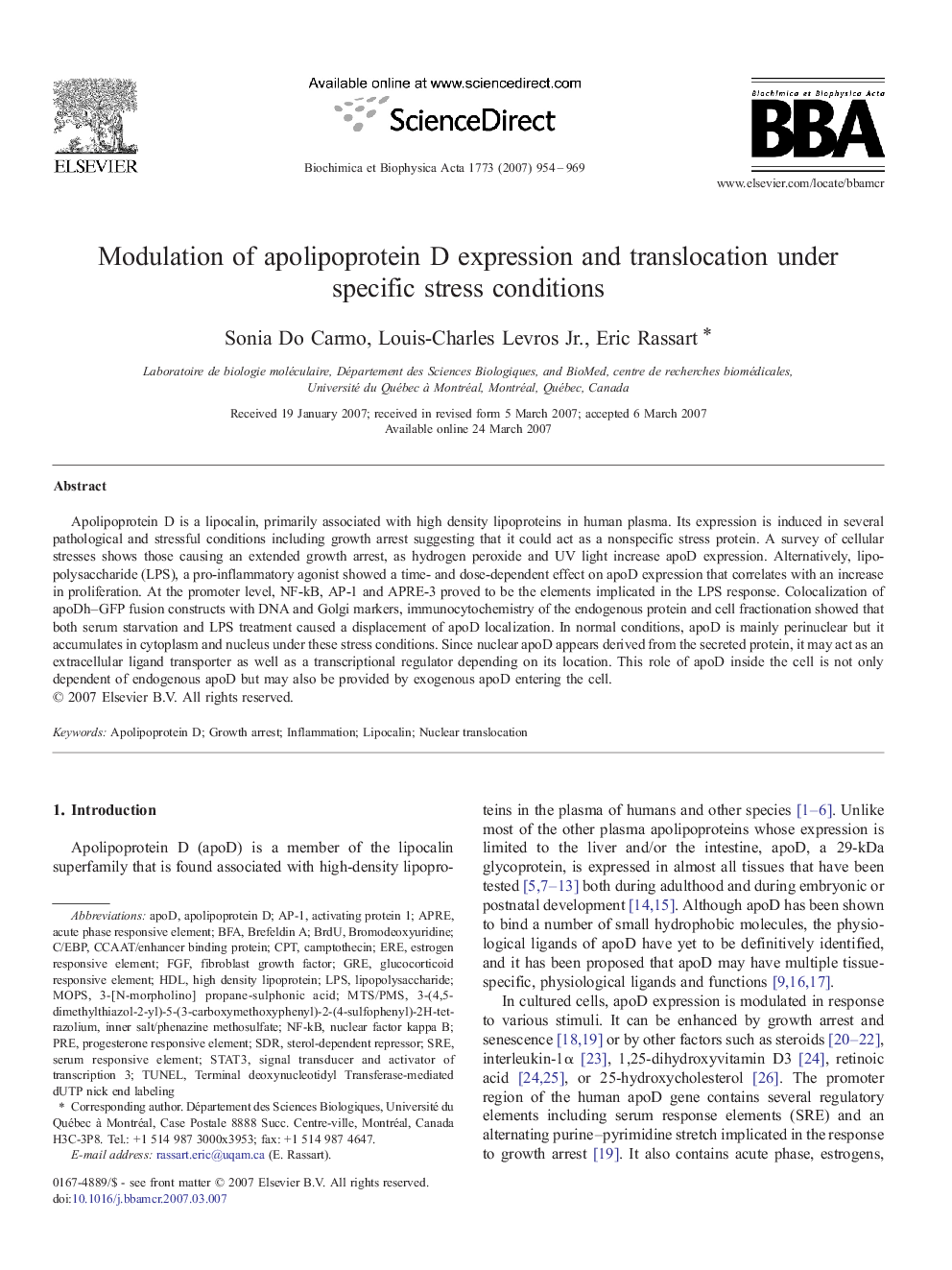| Article ID | Journal | Published Year | Pages | File Type |
|---|---|---|---|---|
| 10803062 | Biochimica et Biophysica Acta (BBA) - Molecular Cell Research | 2007 | 16 Pages |
Abstract
Apolipoprotein D is a lipocalin, primarily associated with high density lipoproteins in human plasma. Its expression is induced in several pathological and stressful conditions including growth arrest suggesting that it could act as a nonspecific stress protein. A survey of cellular stresses shows those causing an extended growth arrest, as hydrogen peroxide and UV light increase apoD expression. Alternatively, lipopolysaccharide (LPS), a pro-inflammatory agonist showed a time- and dose-dependent effect on apoD expression that correlates with an increase in proliferation. At the promoter level, NF-kB, AP-1 and APRE-3 proved to be the elements implicated in the LPS response. Colocalization of apoDh-GFP fusion constructs with DNA and Golgi markers, immunocytochemistry of the endogenous protein and cell fractionation showed that both serum starvation and LPS treatment caused a displacement of apoD localization. In normal conditions, apoD is mainly perinuclear but it accumulates in cytoplasm and nucleus under these stress conditions. Since nuclear apoD appears derived from the secreted protein, it may act as an extracellular ligand transporter as well as a transcriptional regulator depending on its location. This role of apoD inside the cell is not only dependent of endogenous apoD but may also be provided by exogenous apoD entering the cell.
Keywords
LPSSREBFAAP-1EREGREFGFNF-kBHDLSDRCPTMOPSSTAT3C/EBPApoDApolipoprotein DinflammationNuclear translocationbrefeldin ABrdUbromodeoxyuridineTerminal deoxynucleotidyl transferase-mediated dUTP nick end labelingTUNELgrowth arrestglucocorticoid responsive elementEstrogen responsive elementfibroblast growth factornuclear factor kappa Bactivating protein 1prehigh density lipoproteinlipopolysaccharideLipocalinsignal transducer and activator of transcription 3CCAAT/enhancer binding proteincamptothecin
Related Topics
Life Sciences
Biochemistry, Genetics and Molecular Biology
Biochemistry
Authors
Sonia Do Carmo, Louis-Charles Jr., Eric Rassart,
